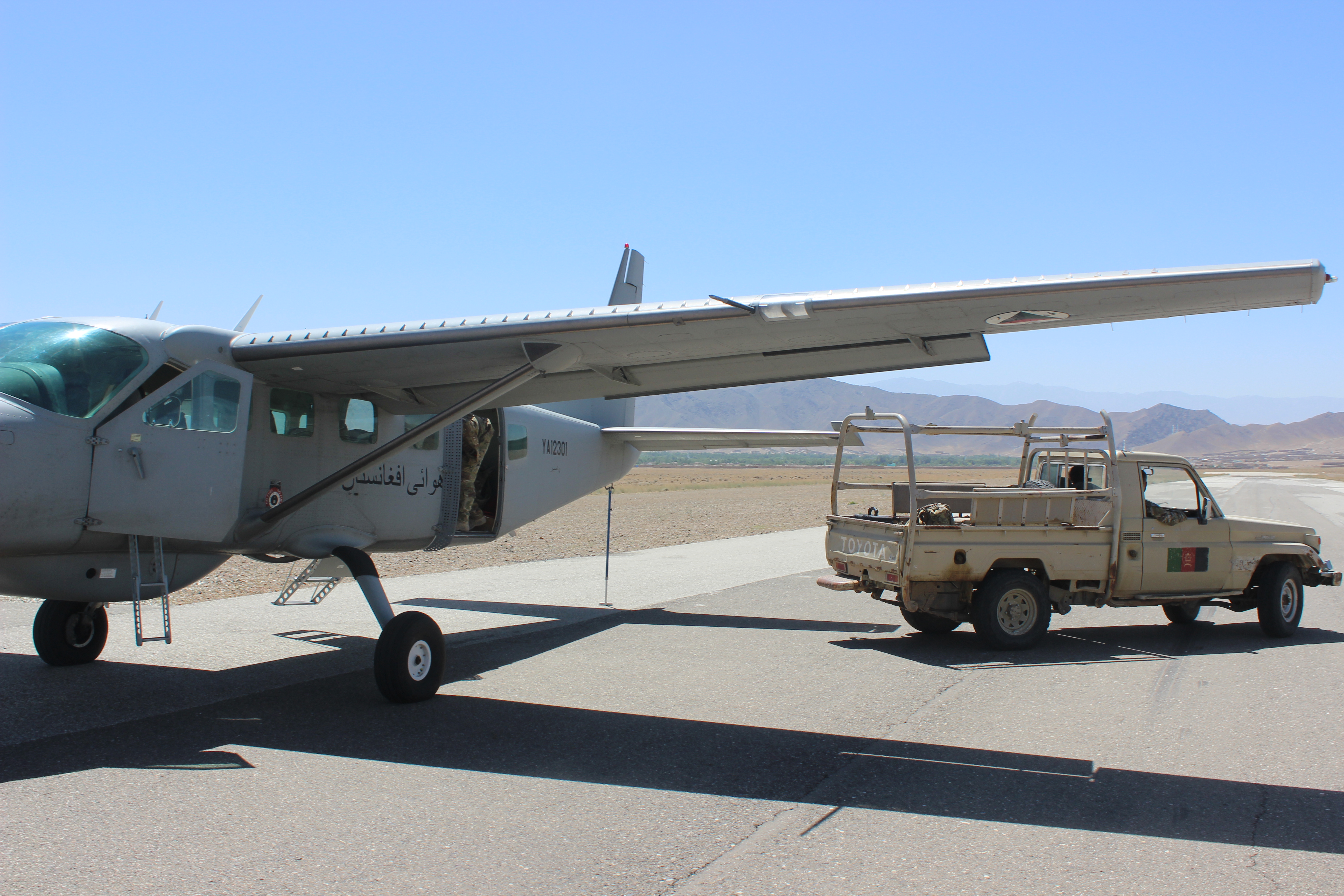An Afghan Air Force Cessna 208 sits on an airstrip at a forward operating base in Afghanistan during a recent airdrop mission. Staff photo by Brian Everstine.
KABUL—About half of the entire sortie count tallied by the Afghan Air Force in 2016 came on the wings of 24 nondescript, single-engine Cessnas that are constantly taking off and landing on airstrips across the country.
The Cessna 208, a resilient and easy to maintain light airlifter, has “turned out to be an amazing airplane” for the Afghan Air Force. The aircraft has accounted for 6,207 out of 13,741 total sorties flown by the entire AAF in 2016, said Col. Lendy Renegar, chief of staff for the 438th Air Expeditionary Wing and the USAF Train, Advise, Assist Command–Air in Kabul.
The aircraft, called the Caravan in civilian use, carried 28,257 passengers and evacuated 2,301 casualties in 2016. That year, the Afghan Air Force flew more sorties than 2014 and 2015 combined, with 2017 already shaping up to be busier as the fighting season kicks off, Renegar said.
USAF advisers, based at FOB Oqab, attached to the Afghan Air Force at Hamid Karzai International Airport in Kabul, work with line pilots up to the Ministry of Defense on air operations, including ensuring the C-208 fleet can carry the load needed in the fight against the Taliban.
The USAF squadron flies alongside Afghan C-208 aircrew on training flights, with the overall goal to let the Afghan crews execute the missions without any American help, said USAF Maj. Randy Stubbs, the chief of C-208 operations for the 538th Air Expeditionary Advisory Squadron.
“They are pretty good at what they do for the most part, and we’re here to sharpen their edge,” Stubbs said. “They are professional, good people. It’s really good flying with them.”
The aircraft can carry up to 3,000 pounds of cargo, and up to 12 soldiers, making it important to help resupply Afghan National Army corps across the country. It is their “tactical airlifter,” akin to how the USAF uses its C-130 fleet, said Renegar.
“It’s a pretty good fleet for what we have here,” he added.
The Afghan Air Force also flies C-130s, with just four aircraft providing in-theater strategic airlift. While there are just four AAF crews fully trained and fully mission capable, the C-130 fleet flew 1,065 missions in 2016. It was responsible for 2,483 casualty evacuation sorties and carried 29,939 passengers.
In addition to training and advising pilots, the 538th in Kabul also trains and advises airdrop specialists on both the C-208 and C-130. USAF CMSgt. Bill Wunderlin, the senior noncommissioned officer in the squadron, said the aircrew he works with on both aircraft have shown “to be very competent, and proficient at what they do.”
USAF advisers work with Afghan loadmasters on understanding several different mission sets, and they “know the jobs in the back of the airplane,” from loading ammunition and people to strapping down helicopters. “They handle that mission very well,” Wunderlin said.
There’s still a long ways to go to build the AAF’s proficiency and professionalism, but overall the desire is there.
“On a personal level, bottom line, they just want a better life,” Stubbs said. “They want a safe, secure better life. They want to be able to take care of their families, and have a country where they don’t have to walk around and worry about stepping on a mine or an IED. Just as much as us. We don’t want terrorism here, they don’t want it either. They don’t want ISIS, they don’t want the Taliban. They want a peaceful life.”
